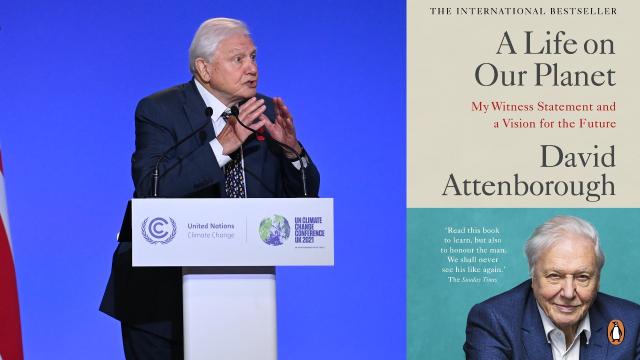Natural historian and broadcaster, Sir David Attenborough, outlines his vision for the future in this extract from his bestselling book ‘A Life On Our Planet’.
How can we encourage a return of the wild and bring back some stability to the Earth? Those who contemplate the path to an alternative, wilder, more stable future, are unanimous in one respect: our journey must be guided by a new philosophy – or, more accurately, a return to an old philosophy.
At the beginning of the Holocene, before farming was invented, a few million humans across the globe were living as hunter-gatherers, an existence that was sustainable, that worked in balance with the natural world. It was the only option our ancestors had at the time.
With the advent of farming, our options increased, and our relationship with nature changed. We came to regard the wild world as something to tame, to subdue and use. There is no doubt that this new approach to life brought us spectacular gains, but over the years, we lost our balance. We moved from being a part of nature to being apart from nature.
All these years later, we need to reverse that transition. A sustainable existence is once again our only option. But there are now billions of us. We can’t possibly return to our hunter-gatherer ways. Nor would we want to. We need to discover a new kind of sustainable lifestyle, one that brings our contemporary human world back into balance with nature once again.
Only then will the biodiversity loss we have caused begin to turn to biodiversity gain. Only then can the world rewild, and stability return.
We already have a compass for this journey to a sustainable future. The planetary boundaries model is designed to keep us on the right path. It tells us that we must immediately halt and preferably start to reverse climate change by attending to greenhouse gas emissions wherever they occur.
We must end our overuse of fertilisers. We must halt and reverse the conversion of wild spaces to farmland, plantations and other developments. It also warns us of the other things we need to keep an eye on – the ozone layer, our use of freshwater, chemical and air pollution, ocean acidification.
If we do all those things, biodiversity loss will begin to slow to a halt, and then start itself to reverse. Or to put it another way, if the chief measure by which we judge our actions is the revival of the natural world, we will find ourselves making the right decisions, and we will do so not just for the sake of nature, but, since nature keeps the Earth stable, for ourselves.
But our compass is missing an important element. A recent review has estimated that almost 50 per cent of humanity’s impact on the living world is attributable to the richest 16 per cent of the human population. The lifestyle that the wealthiest of us have become used to on Earth is wholly unsustainable. As we plot a path to a sustainable future, we will have to address this issue.
We must learn not only to live within the Earth’s finite resources, but also how to share them more evenly too.
A Life On Our Planet by David Attenborough contains a new afterword ‘Why You Are Here: A speech on the opening of the COP26 summit’. (Paperback $22.99, Penguin Random House Australia, available now.)

Leave a Reply
You must be logged in to post a comment.